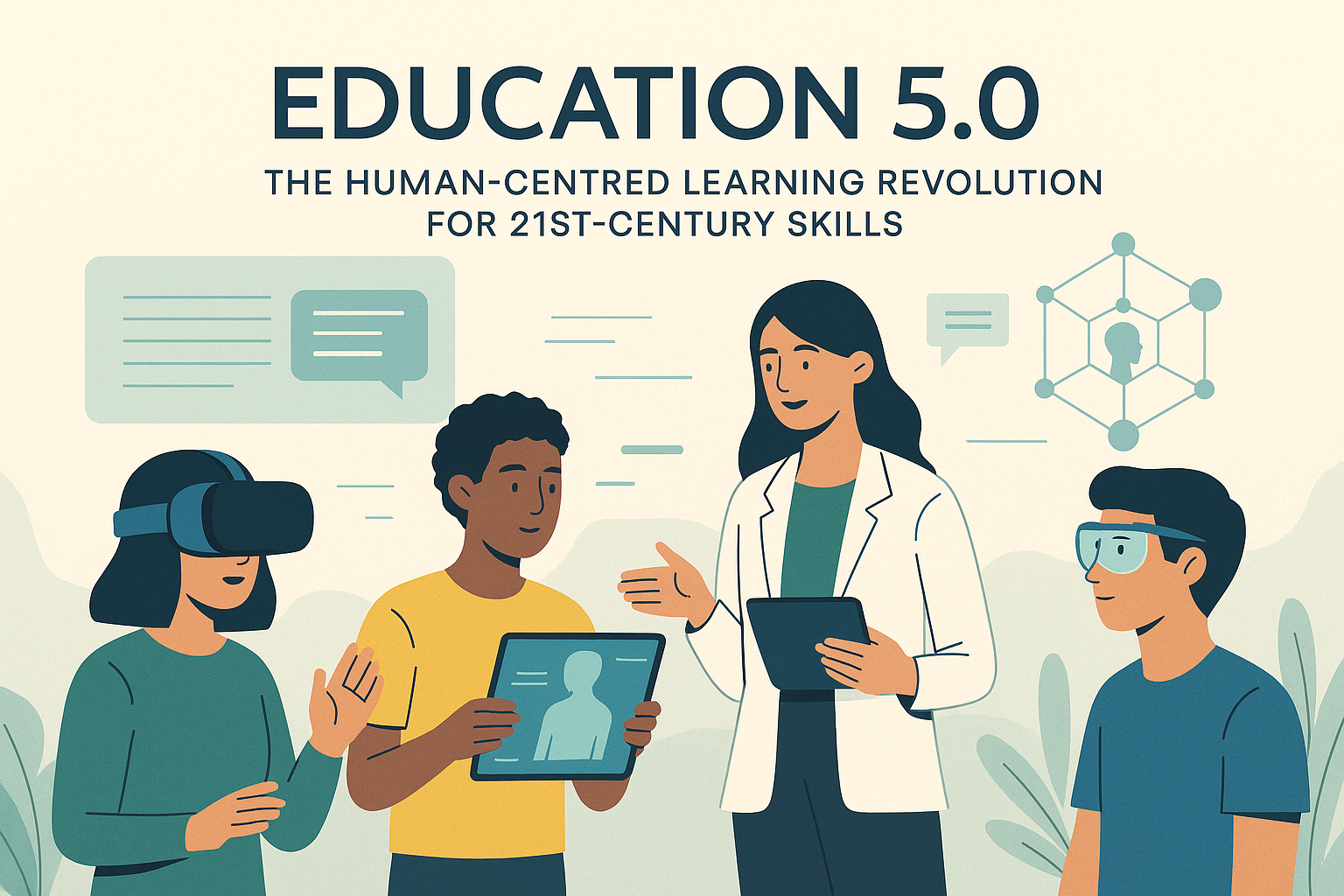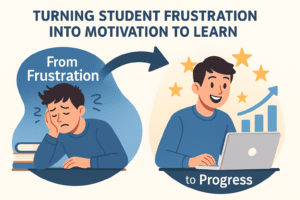Discover what Education 5.0 is and how technology, combined with humanization, can transform teaching, focusing on the student and 21st-century skills.
Education 5.0 represents a new era in teaching and learning. It’s not just about using technology in the classroom; it’s about combining innovation with human development.
In other words, although technology is present, the primary focus is on people: their needs, emotions, learning styles, and their relationships with the world.
This new approach to education is more personalized, inclusive, and aligned with the demands of the 21st century.
Preparing students for the job market is not enough; we must also help them develop empathy, creativity, critical thinking, and life skills.
Read on to find out what you’ll learn in this article:
What is Education 5.0?
It is a model that places humans at the center of the learning process without sacrificing technological innovation.
It emerged in response to Industry 5.0, which emphasizes collaboration between humans and machines and promotes teaching that develops technical and socio-emotional skills.
According to experts and other relevant educational sources, this new era prioritizes the following:
- The personalization of learning through artificial intelligence (AI);
- The creation of immersive experiences with augmented and virtual reality;
- The optimization of educational management with the Internet of Things (IoT);
- The development of empathy, creativity, critical thinking, and collaboration.
These changes are necessary in light of the social, economic, and technological shifts that are shaping the future of work and human coexistence.
A Timeline: The Evolution of Educational Eras
Understanding Education 5.0 necessitates a review ofnecessitates a review of how teaching has evolved. Each stage has reflected its own historical and technological context:
- Education 1.0 – Traditional learning centred on memorization and teacher authority
- Education 2.0 – Introduction of audiovisual resources and early classroom technology
- Education 3.0 – Rise of the internet and more collaborative, exploratory learning
- Education 4.0 – Deep integration of technology with active methodologies (e.g., flipped classrooms)
- Education 5.0 – Human-centered learning that merges innovation with personal growth
Benefits of Education 5.0 for Students, Teachers, and Institutions
For Students
- Personalized learning: AI platforms adapt content to individual pace and learning style
- Soft skills development: Encourages resilience, empathy, and teamwork
- Immersive experiences: VR and AR simplify complex concepts through simulations
- True inclusion: Assistive technologies support students with disabilities or special needs
For Teachers
- Pedagogical support through data: AI tools provide insight into student performance
- More time for teaching: Automation of administrative tasks frees teachers for strategic planning
- Continuous training: Encourages lifelong learning and skill development for educators
For Educational Institutions
- Operational efficiency: IoT optimizes lighting, safety, and attendance tracking
- Data-driven decision making: Learning and behaviour data fuel ongoing process improvement
- Institutional reputation: Schools adopting Education 5.0 gain a future-ready brand image
How to Implement Education 5.0 in Practice
1. Strategically Adopt Educational Technologies
- Learning Management Systems (LMS): Tools like Google Classroom, Moodle, and Canvas centralize course delivery
- VR/AR tools: Apps like Merge Cube or Google Expeditions enhance lesson engagement
- IoT devices: From facial recognition to bright lighting and wearable attention monitors
2. Prepare Educators for the New Reality
- Ongoing professional development: Technical and pedagogical training is key
- Digital competence training: Ranges from basic digital literacy to programming and data analytics
- Teacher empowerment: Educators become mentors, content curators, and learning facilitators
3. Engage the School Community
- Family involvement: Communicate clearly with parents about new tools and benefits
- Student voice: Create listening spaces and empower students to shape their learning
- Partnerships with startups and private sector: Accelerate adoption of edtech and pedagogy innovations
The Role of Educators and Parents in Education 5.0
Teachers as Mentors and Facilitators
In Education 5.0, teachers guide students cognitively and emotionally. They promote active learning, continuous and personalized assessment, and critical thinking.
Parents as Active Collaborators
Parents are essential partners. Their roles include:
- Encouraging responsible tech use at home
- Engaging in school life (meetings, events, communication)
- Supporting children’s socio-emotional development at home
Future Trends and Challenges of Education 5.0
Key Challenges
- Access inequality: Not all students have quality technology at home
- Resistance to change: Many educators and families resist paradigm shifts
- Insufficient teacher training: A significant gap still exists in professional development
Emerging Trends
- Real-time adaptive learning powered by data
- Expansion of the maker movement and STEAM education
- Hybrid learning is becoming the standard
- AI-based gamification and learning customization
Conclusion
Education 5.0 is not just another tech update—it’s a paradigm shift. Combining artificial intelligence, personalization, and humanization enables learners to be both future-ready and socially conscious.
Its implementation requires a strategic vision, committed educators, and an engaged community.
With a human-centred and innovation-driven approach, Education 5.0 has the power to transform the global education landscape.




